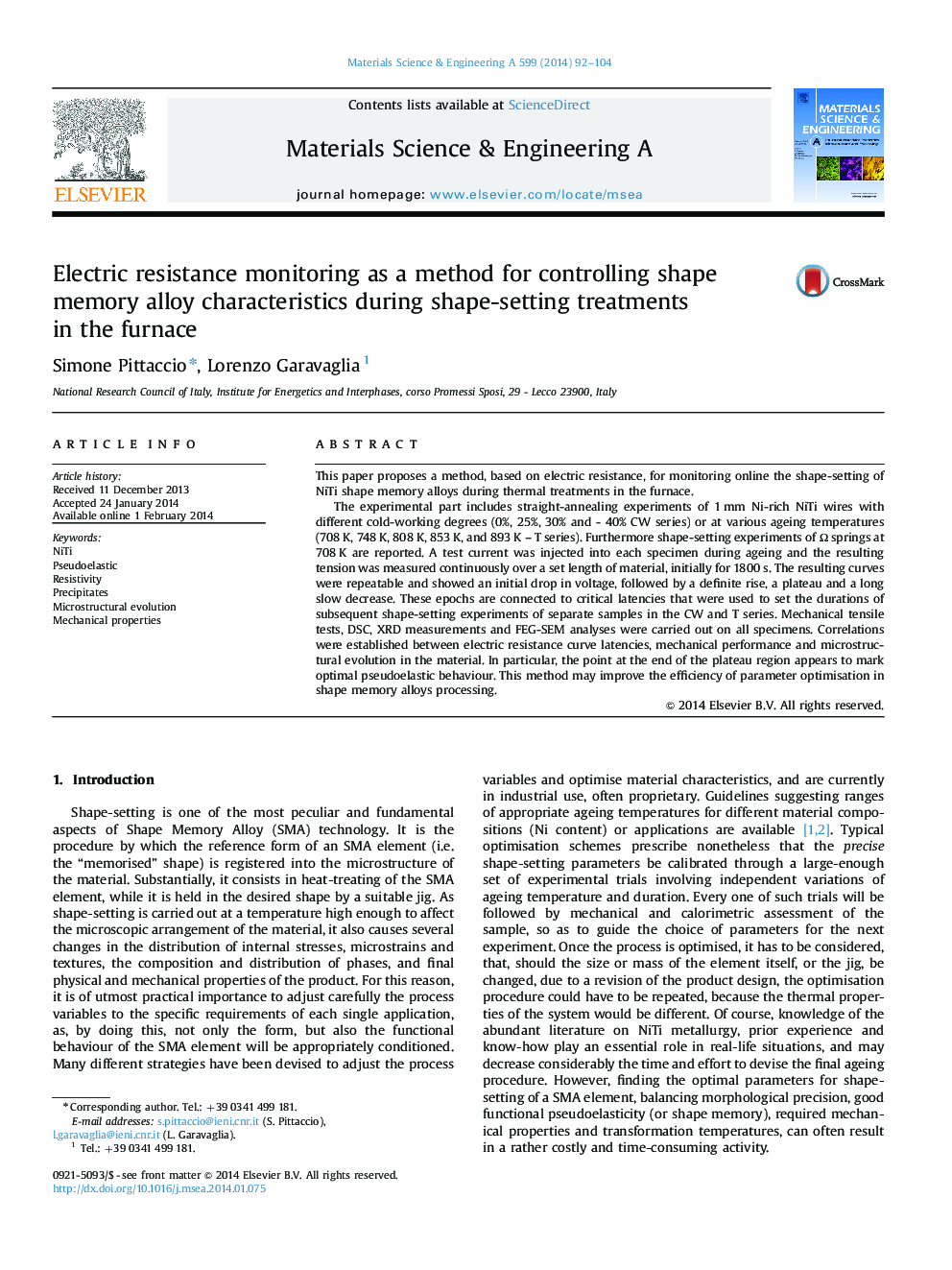| Article ID | Journal | Published Year | Pages | File Type |
|---|---|---|---|---|
| 1575400 | Materials Science and Engineering: A | 2014 | 13 Pages |
Abstract
The experimental part includes straight-annealing experiments of 1 mm Ni-rich NiTi wires with different cold-working degrees (0%, 25%, 30% and - 40% CW series) or at various ageing temperatures (708 K, 748 K, 808 K, 853 K, and 893 K - T series). Furthermore shape-setting experiments of Ω springs at 708 K are reported. A test current was injected into each specimen during ageing and the resulting tension was measured continuously over a set length of material, initially for 1800 s. The resulting curves were repeatable and showed an initial drop in voltage, followed by a definite rise, a plateau and a long slow decrease. These epochs are connected to critical latencies that were used to set the durations of subsequent shape-setting experiments of separate samples in the CW and T series. Mechanical tensile tests, DSC, XRD measurements and FEG-SEM analyses were carried out on all specimens. Correlations were established between electric resistance curve latencies, mechanical performance and microstructural evolution in the material. In particular, the point at the end of the plateau region appears to mark optimal pseudoelastic behaviour. This method may improve the efficiency of parameter optimisation in shape memory alloys processing.
Related Topics
Physical Sciences and Engineering
Materials Science
Materials Science (General)
Authors
Simone Pittaccio, Lorenzo Garavaglia,
